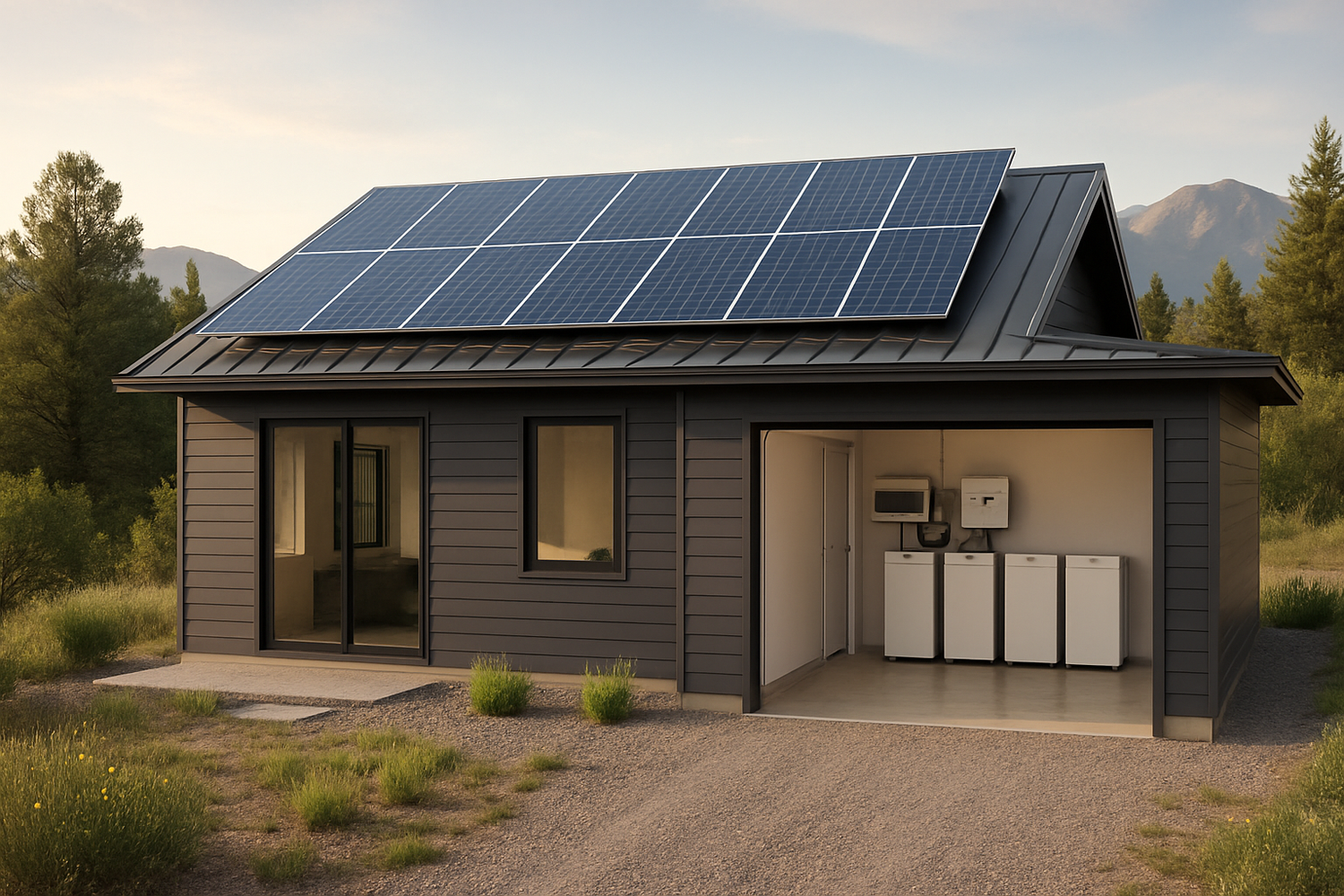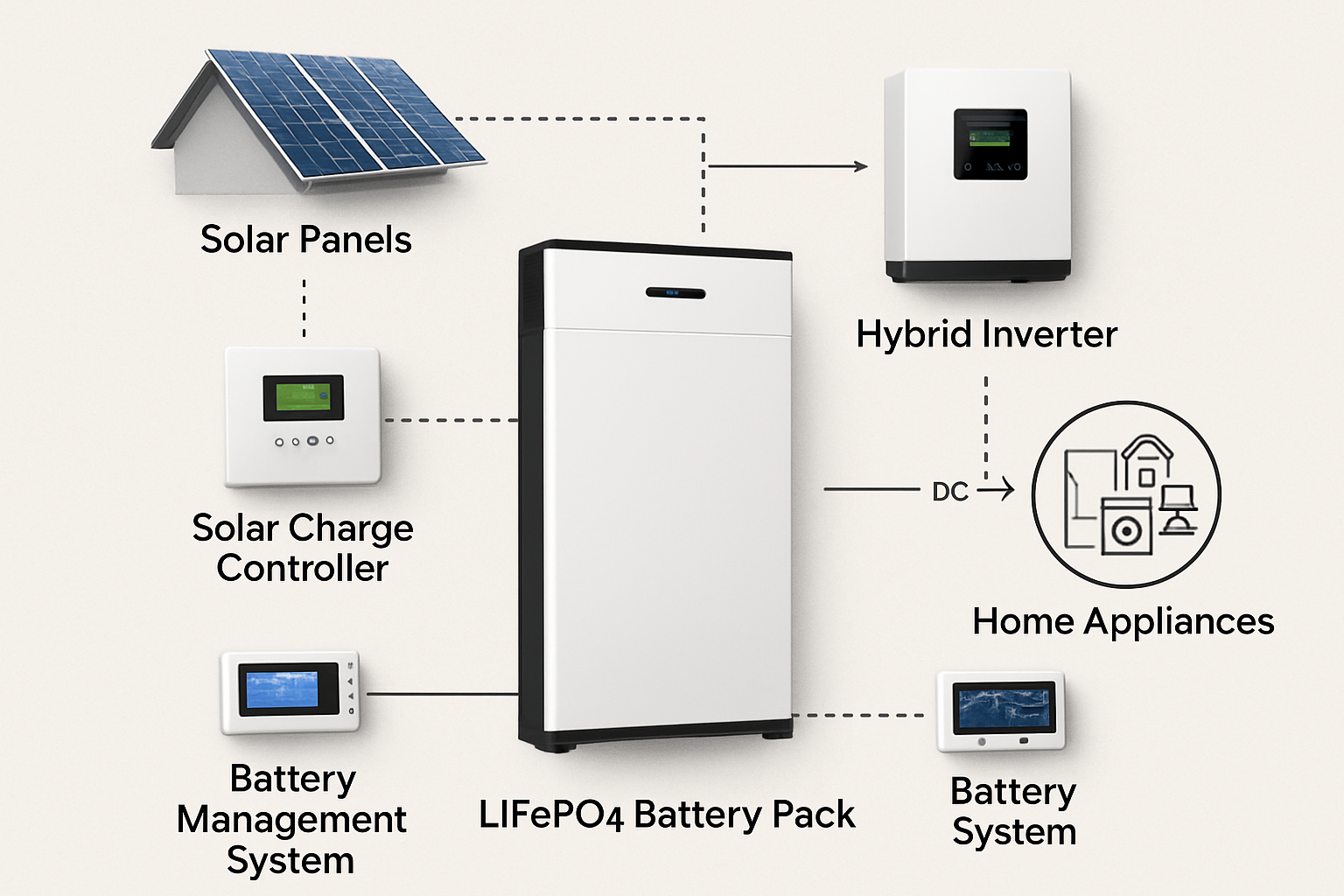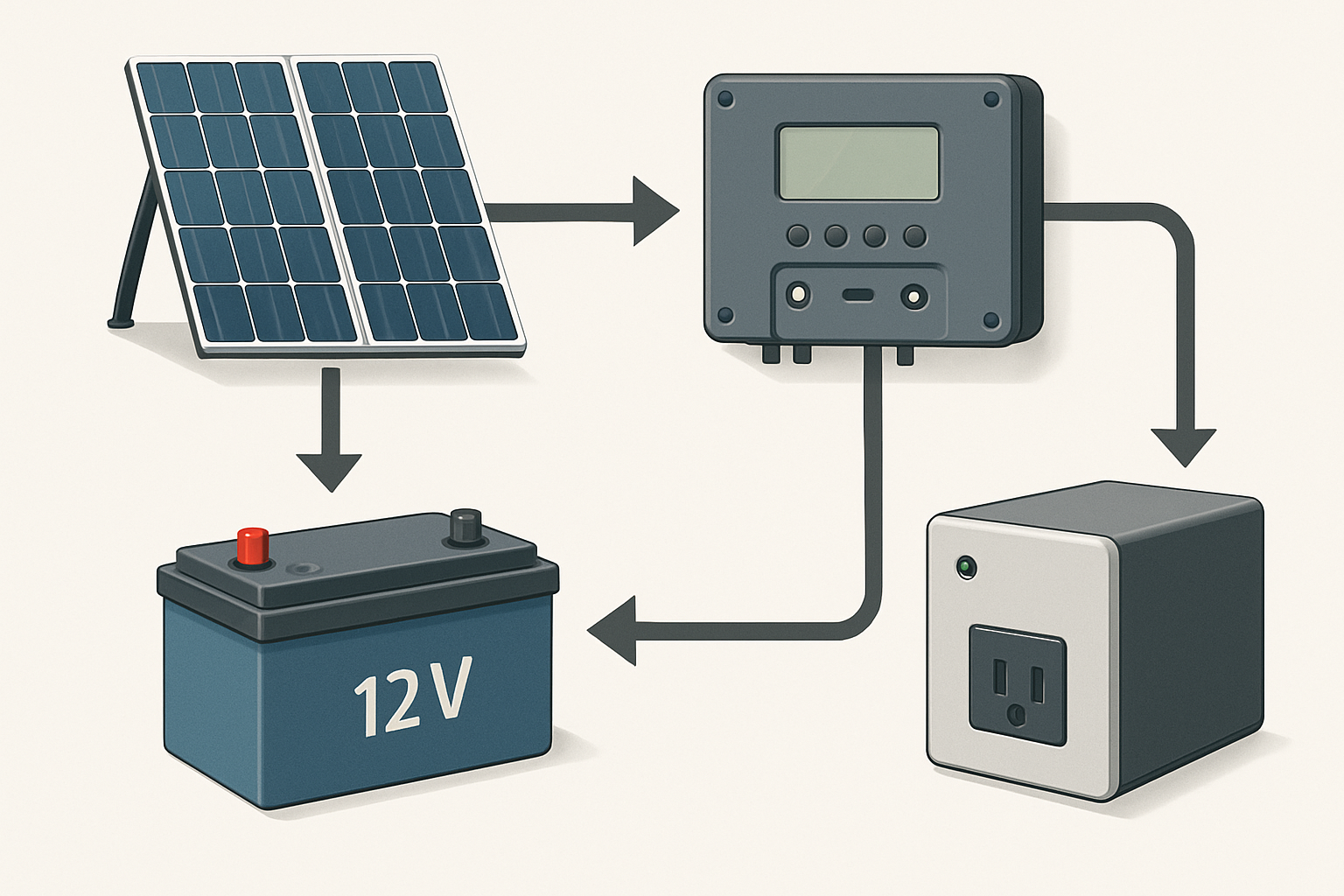Achieving energy independence is a primary goal for many homeowners, farmers, and cabin owners. An off-grid solar system, completely disconnected from the traditional utility grid, offers a reliable path to self-sufficiency. At the heart of these modern power solutions are two key technologies: solar panels for generation and advanced lithium batteries for storage. This combination provides consistent power, day or night, rain or shine.
Understanding Off-Grid Solar Systems
An off-grid solar system is a standalone power station for your property. It generates, stores, and delivers all the electricity you need without relying on a public utility. This autonomy is what sets it apart from other solar setups.
What Defines an Off-Grid System?
The core principle of an off-grid system is its complete independence. Unlike grid-tied systems that send excess power to the utility, an off-grid system directs surplus energy into a battery bank for later use. This stored energy becomes your primary power source when the sun isn't shining. Hybrid systems offer a middle ground, using batteries for backup while remaining connected to the grid, but a true off-grid solution provides total energy freedom.
The Essential Components of Your System
Every off-grid solar installation relies on four critical components working in harmony:
- Solar Panels: These capture sunlight and convert it into direct current (DC) electricity. The number and type of panels determine your system's total power generation capacity.
- Charge Controller: This device acts as a gatekeeper, regulating the flow of electricity from the solar panels to the batteries. It prevents overcharging, which is crucial for protecting the battery bank and extending its life.
- Battery Bank: This is the heart of your energy storage. It stores the DC electricity generated by the panels. Modern systems increasingly use lithium-ion batteries, particularly Lithium Iron Phosphate (LiFePO4), for their high performance and longevity.
- Inverter: The inverter converts the stored DC electricity from the batteries into alternating current (AC) electricity, which is the standard form of power used by most household appliances.
Sizing Your System Correctly
Properly sizing your system is the most critical step in designing a reliable off-grid solution. An undersized system will leave you without power, while an oversized one results in unnecessary expense. The process begins with a detailed load analysis to calculate your daily energy consumption. You must account for every appliance's wattage and daily usage hours to determine your total daily watt-hour (Wh) requirement. Factors like peak power demand and the number of desired 'days of autonomy' (backup power for cloudy days) will dictate the final size of your solar array and battery bank.
The Central Role of Lithium Batteries in Energy Storage
While solar panels generate the power, the battery bank determines its availability and reliability. The choice of battery technology is a defining factor in an off-grid system's performance, and LiFePO4 chemistry has emerged as the industry standard for good reason.
Why Lithium Iron Phosphate (LiFePO4) is a Superior Choice
LiFePO4 batteries offer significant advantages over traditional lead-acid batteries for off-grid applications. They are safer, more efficient, and have a much longer lifespan, making them a more cost-effective investment over time despite a higher initial price. Their superior thermal and chemical stability makes them one of the safest lithium battery chemistries available.
| Feature | LiFePO4 (Lithium Iron Phosphate) | Traditional Lead-Acid |
|---|---|---|
| Depth of Discharge (DoD) | 80-100% | 50% |
| Cycle Life | 3,000 - 6,000+ cycles | 300 - 1,000 cycles |
| Round-Trip Efficiency | ~95% | ~80-85% |
| Maintenance | None required | Regular fluid checks and equalization |
| Safety | High thermal stability, low risk of thermal runaway | Risk of gas emission and acid spills |
Key Performance Metrics for Solar Batteries
Understanding a few key metrics helps in selecting the right battery. Capacity, measured in Amp-hours (Ah) or kilowatt-hours (kWh), defines how much energy the battery can store. Cycle life indicates how many times the battery can be charged and discharged before its capacity degrades significantly. LiFePO4 batteries often provide thousands of cycles, ensuring a service life of a decade or more. For a more detailed examination of these and other technical specifications, you can review this ultimate reference on solar storage performance.
Safety and Maintenance Considerations
LiFePO4 batteries are virtually maintenance-free. They do not require fluid top-ups or equalization charges like their lead-acid counterparts. Each battery pack is equipped with an integrated Battery Management System (BMS), which protects against overcharging, over-discharging, and extreme temperatures, ensuring safe and reliable operation for years.
Designing and Implementing Your Off-Grid Solution
A successful off-grid project requires careful planning and execution, from initial assessment to final installation.
Step 1: Assess Your Energy Consumption
The first step is a thorough energy audit. Create a comprehensive list of all appliances, lighting, and devices you intend to power. Note their wattage and estimate their daily hours of operation. This data is essential for calculating your total daily energy needs and is the foundation upon which your entire system will be designed.
Step 2: Selecting the Right Components
With your load analysis complete, you can select components. Choose high-efficiency solar panels (monocrystalline are often preferred for their performance). Select a pure sine wave inverter capable of handling your peak load—the maximum power drawn when multiple large appliances run simultaneously. Finally, size your LiFePO4 battery bank to meet your daily energy needs and provide enough backup for several cloudy days.
Step 3: Installation and Best Practices
While some individuals with advanced electrical skills may undertake a DIY installation, professional installation is highly recommended for most off-grid systems. Professionals ensure that all components are wired correctly, fuses are in place, and safety codes are met. Proper installation is key to maximizing system efficiency, ensuring safety, and protecting your investment.
Real-World Applications and Benefits
Off-grid solar systems are transforming how people access power in various settings, driven by falling costs and improving technology. The International Energy Agency (IEA) notes that the combination of solar PV and batteries is already competitive with new fossil fuel plants in several regions. Furthermore, the IEA projects that developer costs for battery storage could fall by as much as 40% by 2030, making these systems even more accessible.
Energy Independence for Homes and Cabins
For residential homes and remote cabins, an off-grid system provides immunity from power outages and the volatility of utility pricing. It offers the security of a stable, self-managed power supply, enabling a modern lifestyle in any location.
Powering Remote Farms and Agricultural Operations
In agriculture, off-grid solar can power essential equipment like water pumps for irrigation, lighting in barns, and electric fencing. This reduces operational costs and improves the reliability of farm operations, especially in areas far from the grid.
The Financial and Environmental Equation
Switching to an off-grid solar system eliminates monthly electricity bills, leading to significant long-term savings. Environmentally, it reduces a household's carbon footprint by relying on clean, renewable energy. According to the International Renewable Energy Agency (IRENA), renewable sources accounted for a record 92.5% of global power additions in 2024, with solar power leading the expansion. This global trend underscores the shift towards sustainable energy solutions.
A Future-Proof Energy Strategy
Investing in an off-grid solar system powered by lithium batteries is more than just an energy choice; it's a move toward long-term resilience and sustainability. By harnessing solar power and storing it efficiently, you gain control over your energy supply, reduce your environmental impact, and secure a reliable source of power for years to come. This technology empowers you to live and work anywhere without compromising on your power needs.
Frequently Asked Questions
How many solar panels do I need for an off-grid house?
The number of panels depends entirely on your daily energy consumption, your geographic location (which determines peak sun hours), and the size of your battery bank. A thorough load analysis is the only way to accurately determine the required size of your solar array.
How long do LiFePO4 batteries last in a solar system?
High-quality LiFePO4 batteries are designed for longevity. They typically have a lifespan of 10 to 15 years and can endure thousands of charge-discharge cycles (often between 3,000 and 6,000) before their capacity significantly diminishes.
Can I install an off-grid solar system myself?
While it is possible for individuals with significant electrical expertise, it is generally not recommended. Off-grid systems involve high voltages and complex wiring. Professional installation ensures the system is safe, efficient, and compliant with any local regulations. For safety and performance, consulting with a qualified installer is the best course of action.
Disclaimer: This article is for informational purposes only and does not constitute professional engineering or financial advice. Consult with qualified professionals before making any decisions regarding the installation of an off-grid solar system.





Leave a comment
All comments are moderated before being published.
This site is protected by hCaptcha and the hCaptcha Privacy Policy and Terms of Service apply.